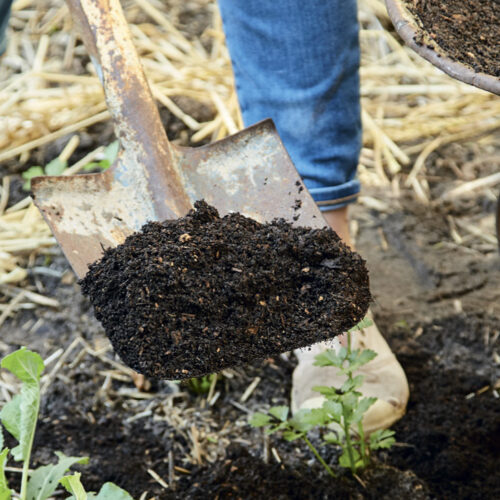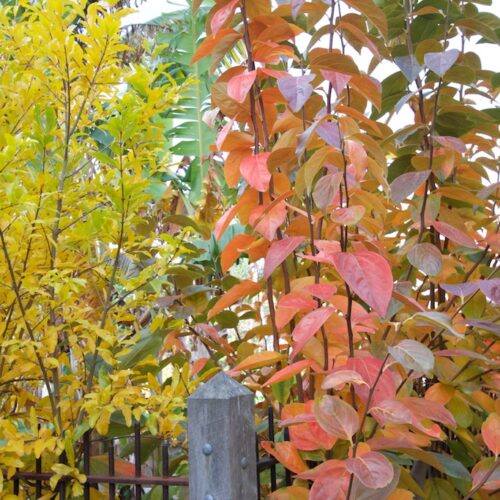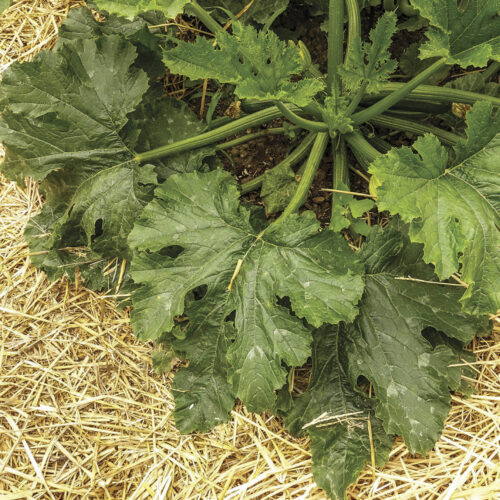Gardener’s Gold
2012-05-31T03:21:14+10:00
Jerry Coleby-Williams explains how to turn autumn leaves into a rich garden resource – leafmould.
Why waste a free resource like leaves when they can be turned into leafmould – a stable, biologically active and carbon-rich mulch or soil conditioner. When matured, this crumbly product of composted leaf litter is practically pure humus and smells rich and earthy like an ancient forest floor.
Leafmould is low in nutrients, but makes a superb soil improver for vegetable and flower beds. Also, by conditioning soil and encouraging beneficial fungi, it aids cultivation, especially in new gardens and with species originating in forest ecosystems. Large gardens can generate sufficient quantities to top-dress lawns and as a surface mulch for ferns, foliage plants, potted plants and acid-loving species. But even in small gardens, a compost bin can be used to produce leafmould.
How to make it
Traditionally, leafmould is made in autumn in cold climates from the fallen leaves of winter deciduous trees and shrubs. But it can be made from the leaves of bamboo and warm-season deciduous species like strangler fig and rainforest trees. No matter what leaves you use, or climate you live in, mowing the leaves first (mulching mowers are excellent) to shred them will speed up the process, as will sprinkling a handful of blood and bone per square metre and watering this through with seaweed solution before covering (see below). This is vital for eucalyptus leaves which are slow to break down and also need extra tamping down once a month. The leafmould from eucalypts is best kept for native beds.
Simple method
1. Pile up leaves in a compost bin, a u-shape of hay bales, or a container made from chicken wire or similar. You can line wire containers with plastic or shadecloth to help conserve moisture. A container of a cubic metre (or more) generates heat as it decomposes, accelerating production.
2. Compact leaves by treading or pounding them down.
3. Moisten them so they are damp but not soggy.
4. Once the heap stops steaming, turn the heap and cover with a tarp or shadecloth and leave to breakdown.
The waiting game
In a cold climate, a pile up of autumn leaves will take one to two years to rot. In optimum conditions – hot composting in a frost-free climate – leafmould can be produced as fast as three to four months. For instance, after a street sweeper broke down at the Royal Botanic Gardens, in Sydney, autumn leaves were collected from London plane trees in July and composted in heaps contained by netting, which was pegged into the soil and hidden behind shrubs. The leaves were sprinkled with blood and bone, and wetted by existing overhead sprinklers. The heaps were turned in August, and by October had produced a high-quality, ready-to-use leafmould. In contrast, composting leaf litter from fibrous, carbon-dense evergreen trees and shrubs may take two years, even in a warm climate. Very coarse leaves, like pine and sheoak needles, are not generally used since composting may take three years. Instead, these needles make a premium surface mulch for acid-loving, surface-rooting plants like camellia, gardenia, rhododendron, citrus, blueberry and strawberry.
This article was first published in 2012 when Jerry Coleby-Williams, now presenter on the ABC’s Gardening Australia, was working with the OG team – definitely worth revisiting especially this time of year!

.jpg)




